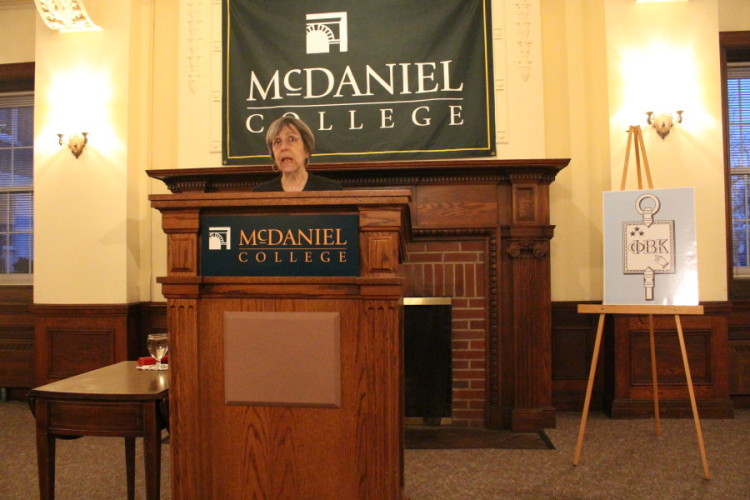Written in Syracuse, Greece in the third century B.C., deposited by an anonymous collector at the Walters Art Gallery in Baltimore in 1998, and presented in a slideshow here at McDaniel earlier this month by at the annual Phi Beta Kappa lecture, a book that came to be known as the “Archimedes Palimpsest” certainly had quite the story to tell.
The lecture’s guest speaker, William Noel, curator of manuscripts and rare books at the Walters, put it plainly when he said, “You’d have to be a nutcase to try and read this. It’s not easy.”
The Palimpsest is comprised of seven treatises written by Archimedes which were erased and written over by a monk during the twelfth century A.D. It was converted to a prayer book which was kept in Jerusalem for the next several hundred years. This, in combination with water damage, fire damage, bookworm damage, wax residue from the candles used to write it, and decay of the pages themselves (which were made from sheep hide), made the Archimedes text only readable under ultra-violet light—and even then, there was guesswork to be done in certain sections.
According to Professor Reviel Netz of Standford University, who has penned a book with Noel entitled “The Archimedes Codex,” the treatises present in the Palimpsest contain “key mathematical proofs…conceptual fields of calculus, and of infinity.”
Included in the treatises is the only known surviving copy of “On Floating Bodies,” written in Greek—detailing Archimedes’ studies of the famous “eureka” moment of dropping gold in his bathtub, and noticing the displacement of water. Archimedes also included many puzzles and diagrams in his writings, one of which consists of a square divided into 14 fragments, which can be re-assembled in 17,152 different ways.
The exhibit will be showing at the Walters Art Gallery until January 1st, 2012 and will reveal the history of the Palimpsest’s journey as well as the resurrection of its ancient knowledge in much greater detail.


